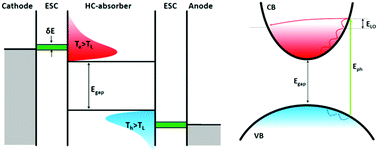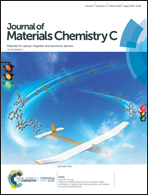Hot carrier solar cells and the potential of perovskites for breaking the Shockley–Queisser limit
Abstract
In this review article, we discuss the working mechanism of hot carrier solar cells (HCSCs), their prerequisites from a material point of view and consider power conversion efficiencies that could reasonably be achieved with these devices. We review phonon decay pathways and proposed design rules for hot carrier absorbers established for classical bulk materials, as well as engineering efforts based on nanostructuring. Our main focus, however, lies on the recently emerged class of metal halide perovskites that not only exhibits tremendous potential in standard solar cells, but also offers highly promising hot carrier lifetimes. We discuss possible origins for this encouraging observation and point out pathways for future research towards HCSCs that break the Shockley–Queisser limit.

- This article is part of the themed collection: Journal of Materials Chemistry C Advisory Board Collection


 Please wait while we load your content...
Please wait while we load your content...